1. Vasu Ki Tal
Vasu ki Tal is an altitude of 4135m. and offers mesmerizing views of the neighbouring marvellous Chaukhamba peaks. It is a paradise for trekkers as it is the perfect range to climb up. The Chaturangi and Vasuki glaciers can be found en-route to the lake. Vasu Ki Tal is just 5 km from Kedarnath. The melting waters from the snow-clad mountains nearby drain into this lake. This lake freezes in the winter season. The shape of the lake resembles the snake Vasuki coiled around the neck of Lord Shiva and thus it is named Vasu Ki Tal. One can even trek to Vasuki Tal that is usually completed in a day itself form Kedarnath.
This trek is considered to be a moderately difficult trek, especially for first-time trekkers. Trekkers can start trekking right away from Gaurikund or one can take a pony ride tothe Kedarnath shrine and then trek towards Vasuki Tal. It is a good 8kms trek from Kedarnath and a 24kms trek from the nearest road heat at Gaurikund. Visit this place in May, June, September, October and November.
2. Shankaracharya Samadhi
Sri Shankaracharya who propounded the Adwaita Philosophy established this holy shrine and is one of his four Mathas in the 8th century and attained Nirvana at the age of 32 here. The Shankaracharya Samadhi is located in Kedarnath, behind the holy Kedarnath temple.
At the age of 32, he decided to attain moksha at Kedarnath and merged under the land near Kedarnath temple and thus this place got its name as Shankaracharya Samadhi.
3. Bhairavnath Temple
The beautiful Bhairavnath temple is located at a distance of just 500m from the holy Kedarnath temple on the Southern side. This temple is enshrined by the revered Hindu god- Lord Bhairav. This pretty temple is nestled on top of a hillock and offers one the fantabulous views of the surrounding majestic Himalayas and the entire Kedarnath valley below.
The enshrining deity of the temple is also known as the Kshetrapal or the guardian of the region has a Trishul as a weapon and a dog as his vehicle. Visit this temple from May to November. Bharavnath temple remains closed for most of the winter season. Gaurikund is the nearest motorable road to reach this holy temple. The nearest railway station is in Rishikesh while the nearest airport is in Dehradun that is around 250kms away.
4. Bhimshila
On the night of June 16 in the year, 2013 Kedarnath was hit by the fateful flood that brought in its wake unprecedented disaster in the state of Uttarkhand. Many may be aware of the story of the rock that sacred the shrine of Kedarnath from being washed away by the floods of June 16. The Kedarnath valley along with other parts of the te of Uttarakhand was hit with unprecedented flash floods on 16 and 17 June 2013.
Devotees of Lord Shiva have named this rock Divya Bheem Shila or ethe Divine rock of Bheema. When the temple was reopened after the disaster the priests offered worship at this Bhimshila rock too. This rock ahs now become a part of the Kedarnath temple sanctity. The rock has got anchored some thirty feet away right behind the main shrine. It is around 20 feet wide and 12 feet tall.
5. Mandakini River
The serene Mandakini river emerges from Chorabari Glacier near Kedarnath in the state of Uttarakhand. This river is a tributary of the Alaknanda River and is fed by the Vasukiganga river at Sonprayag. The river merges with Kaliganga near the holy Kalimath temple and with Madhyamaheswar Ganga near Ukhimath. The pristine Mandakini river is considered to be pious for the Hindus as it is associated with Bhagwat Geeta- a Hindu mythology. Mandakini rivers flow in divinity near Kedarnath Dham and offer spiritual bliss to numerous devotees.
It turns violent during the monsoon season causing havoc in the nearby villages. The flash floods in the year 2013 in Kedar valley was caused by this river only. The turbulent waters of this tranquil river offer grade III rapids, a few grades and Grade V rapids that is pretty much ideal for white river rafting and kayaking.




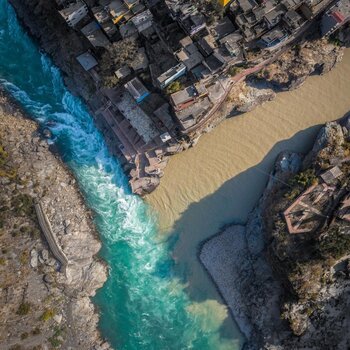
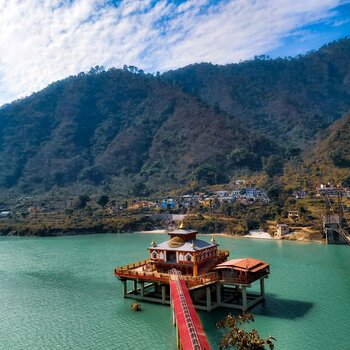
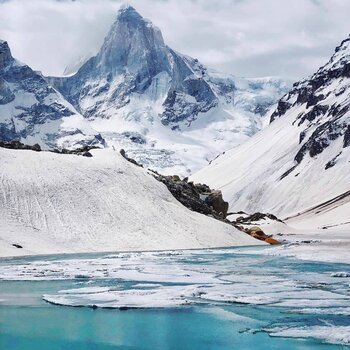
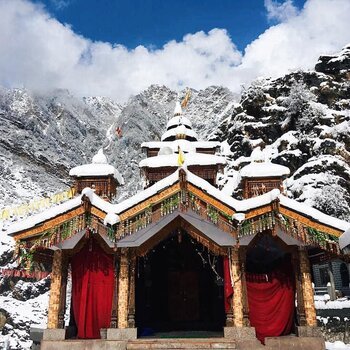
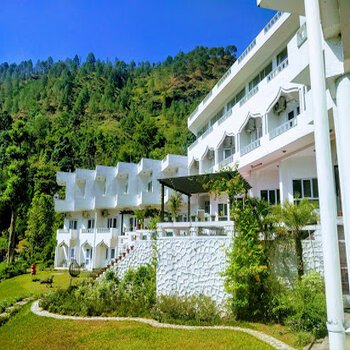
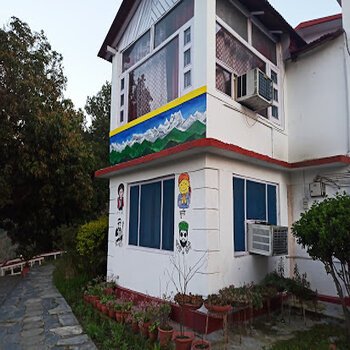
 Enquiry
Enquiry